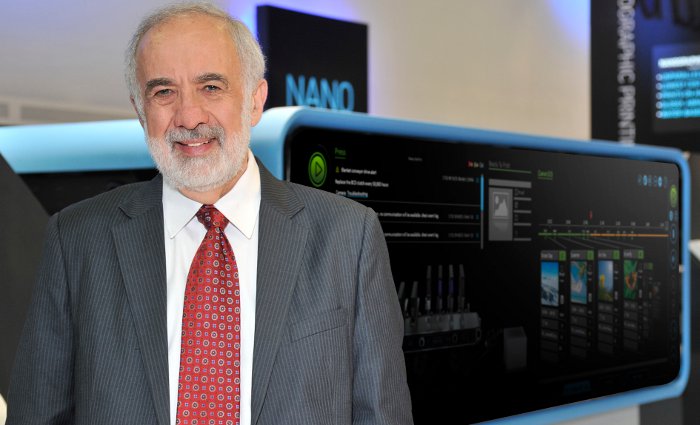
The nano printing method developed by Landa Corporation was officially unveiled to the public as Drupa opened its doors yesterday.
Landa, who founded Indigo and began the digital printing revolution in 1993, said: "Our objective is to bring digital to mainstream, to the area where offset currently dominates. I expect this technology to become the next industry standard."
As well as licensing Nanography – deals with Komori and Manroland Sheetfed were announced in the days running up to the opening of the show – Landa will also sell its own range of web and sheetfed presses and is exhibiting six different models at Drupa.
The presses look radically different from existing machines, either conventional or digital, and are very compact. Each has a giant touch screen running along the front, from which the operator controls the device and can see what is happening inside via cameras.
"The reason for the touch screen is simple, we are targeting these products at the mainstream," Landa explained. "A press operator is used to going from one section to the other on a press, working with his hands. We’re giving him the same option with a totally intuitive interface to the machine.
"You can say to someone ‘go the machine’ and it’s like an iPhone – let them play with it for a few minutes and they’ve got it."
In theory all are eight-colour, can perfect, and print at 600dpi or 1,200dpi. The eight colours could be CMYK plus four special colours, or CCMMYYKK for double the speed or double the resolution. Top speed is 13,000sph on the B1 sheetfed model, B2 is 12,000sph and B3 11,000sph.
The web presses, which are targeted at commercial, narrow web and flexible packaging, have a maximum speed of 200m/min.
The Nanography process involves ejecting tiny droplets of NanoInk, which contains nano-level pigment particles, on to a heated blanket belt. The complete image incorporating all colours is then dried on the blanket before being transferred to the paper via pressure, in one hit.
The purity of the nano pigments and high resolutions possible using the process means it can also produce a wider colour gamut than standard CMYK, encompassing around 17% more Pantone colours than offset, said Landa.
For more, see our big interview with Benny Landa here.
This article originally appeared at printweek.com
Comment below to have your say on this story.
If you have a news story or tip-off, get in touch at editorial@sprinter.com.au.
Sign up to the Sprinter newsletter
